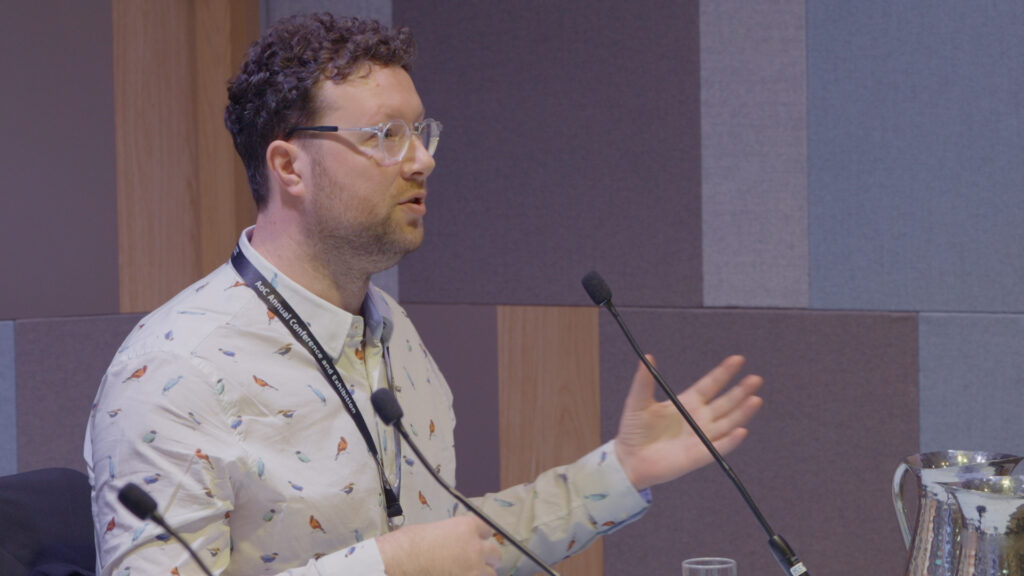What is blended learning?
What is blended learning?
As experts in blended learning in further education, one of the most fundamental questions the Mindful Education team gets asked is: what is it?
Put simply, blended (or hybrid) learning is a way of studying that combines online learning materials with in-person teaching and support. It brings together the flexibility of digital tools – such as videos and quizzes – with the structure and support of face-to-face sessions.
For many learners, it offers the best of both worlds: choose how, when and where you want to study, but still benefit from regular classes with a tutor – without having to commit to attending multiple sessions each week. But it’s not just about convenience – blended learning often leads to better engagement, stronger outcomes, and a more personalised learning experience.
Over the past few years, blended learning has become an integral part of the UK education system – especially for adult learners. Courses are increasingly delivered using this format, with colleges and training providers embracing technology to make learning more accessible, inclusive and relevant to modern life.
At Mindful Education, we produce flexible, award-winning, blended learning courses and apprenticeships that continue to set new standards in digital education.
We’re an edtech company that specialises in blended learning for professional qualifications for adults, including accounting, management, law, business and human resources.
Our in-house teams create innovative, media-rich courses that flex around the learner. A compelling mix of academic expertise, technology and creativity, our courses bring learning to life and achieve outstanding results.
Working in partnership with hundreds of colleges and employers, we support thousands of learners each year, helping people to take the next step in their careers and realise their ambitions.
The future of learning is blended
Technological advancement has always driven innovation in learning: in the last 30 years alone, blackboards have given way to smartboards, apps have replaced homework diaries and spelling lists are downloaded rather than printed.
The idea of non-classroom based learning is nothing new, with correspondence courses being offered by the University of London as early as 1858. Towards the end of the 20th century, the concept of blended learning was gaining popularity as a means to overcome the challenges associated with distance learning, and the advent of MOOCs (massive open online courses) in the mid-2000s led the way in integrating online resources with face-to-face delivery in higher education.
As the world locked down in 2020, the pandemic rapidly accelerated digital adoption across every part of society – including education. In the same way that many people now prefer to split their working week between home and the office, learners are increasingly expecting flexible ways to study. Advances in digital literacy, learning platforms and mobile technology have meant that technology-enhanced learning is more available than ever before.
However – it’s important to recognise that not all blended learning is the same and that standards vary. This article will explore how blended learning works, how it compares to distance learning, and what to look for when you’re exploring blended learning options.
What are the benefits of blended learning?
Blended learning isn’t just a buzzword – it’s a learning model that is effective, accessible and more sustainable than fully online or traditional classroom-based study.
Originally created as a means for adults to study (and that remains the market for Mindful Education), blended learning is now so firmly established as an effective educational tool that it is incorporated at all stages of formal education – starting at the age of 5.
At Mindful Education, we specialise in part-time adult courses, and our learners are often balancing work with a busy home life, or returning to studying after a break. For this audience, a well-designed blended course can provide the vital tools to succeed in post-18 education.
Flexibility
The introduction of technology into education (sometimes known as ‘edtech’) has made a significant difference in breaking down barriers for learners: it can bridge geographical distances, adapt to the busy schedules of parents and caregivers, and meet the specific needs of learners through digital accessibility tools.
Above all else, blended learning is designed to be flexible, allowing you to study when, when and where it suits you – not just when the classroom is open. This might mean watching a short video on your lunch break, completing a quiz on the bus, or committing a Sunday afternoon to finishing a unit. With content at your fingertips, you can also revisit resources as many times as you need to feel confidence.
Accessibility
This flexibility also removes common barriers to education. Less time spent in the classroom means you don’t need to arrange as much childcare, or spend time (and money) on frequent travel.
“Blended learning means I can have a good work-life-family balance. If I didn’t study in this way, then I wouldn’t be able to do my qualifications.”
When done right, blended learning can also be a more inclusive model. Learners who speak English as a second language, or have additional learning needs, can benefit greatly from subtitled videos that they can pause, rewind and revisit at their own pace.
For learners with additional needs, our VLEs offer a highly-accessible learning experience, including a double AA rating under Web Content Accessibility Guidelines (WCAG).
“The option to rewatch videos really helped as sometimes I find it difficult to understand when I’m learning. With my level of English I wouldn’t be able to understand and pass the course just by attending the on campus lessons. I need to read, watch, rewatch and relisten multiple times so that I can learn concepts and improve my English writing.”
Tech-powered inclusion
Our recent thought piece explores these themes in more detail, highlighting the critical role that blended learning plays in boosting participation, accessibility and learning outcomes – especially for those who may feel left out by traditional models.
Engage to succeed
When you’re investing time and money into your future, you want it to be worth it. Blended learning works because it helps to keep you engaged – both online and on campus.
High-quality blended learning uses active learning techniques to support student engagement, such as videos, check-learning quizzes and other interactive tools.
Away from the screen, you are part of a learning community with regular catch ups with a tutor, group sessions with classmates, and the opportunity to share ideas, ask questions and receive personalised feedback on your progress.
This super-blend of quality time with a tutor and the flexibility of online study promotes learner autonomy and a sense of accountability, meaning you’re more likely to complete your course and get higher results.
Mindful Education’s results
When a blended programme is thoughtfully designed, the proof is in learner results. Mindful Education’s blended learning courses are the best in the market, and learners enjoy outstanding outcomes across all our subject areas:
- 80% of learners who complete their qualification achieve a Merit or Distinction
- For every unit, on every AAT qualification we deliver, average results achieved by Mindful Education learners were above AAT’s published worldwide averages (based on 2023-24 results, collated in October 2024 from 48 partners, minimum of 70 sittings per unit)
The importance of quality
Blended learning can transform your education experience, but only when it’s designed with intention and care.
Many providers sell the promise of blended learning with slick marketing, only to deliver sub-standard online resources such as links to generic YouTube videos, lengthy PDFs or poor quality recordings of outdated classroom lectures.
Here are our top tips on what to look for when choosing a high-quality blended learning provider:
- Great delivery is the foundation for every hybrid learning model. A strong blended programme is carefully designed to ensure that online and in-person elements work in harmony. Look out for well-communicated schedules, so that you know in advance when you are required to attend classroom sessions
- Academic expertise is essential for your success. At Mindful Education, our courses are written by academic experts and rigorously quality-checked to meet course specifications.
- A high-spec user experience makes all the difference. A smooth, accessible platform makes studying online easier and more enjoyable. Our courses feature high-quality videos, animations and interactive quizzes, designed to work on any device and meet a wide range of learner needs.
- Access to personalised learner support – whether that’s a 1:1 session with a tutor, or technical support for your online learning platform. Our courses are underpinned by detailed analytics to help tutors understand your progress so they can provide the support you need, exactly when you need it.
What's the difference between blended learning and distance learning?
Many providers don’t distinguish between blended and distance learning – but there are fundamental differences that can have a big impact on your success.
Distance learning usually means studying entirely alone, using online or hard-copy materials with no face-to-face contact. While it’s flexible, the lack of interaction can have a detrimental impact on motivation and success.
Very few distance learning providers choose to publish their results, but achievement rates for some distance learning courses are thought to be as low as 10%. True achievement rates are based on the number of people who started the course, not simply the number who took the assessment. Always ask for this information if you’re considering a distance learning course.
Blended learning combines the flexibility of online study with the structure, support and interaction of in-person learning. You enjoy the freedom to learn at your own pace, but also meet regularly with tutors and classmates either on campus or in virtual classrooms.
Standard blended learning structure sees learners attending classroom sessions to learn key concepts, with videos or other online resources being used afterwards to support the theory.
Recent research by Jisc shows how blended learning delivery at further education colleges across Wales has improved engagement, widened access and supported learner progression.
Flipped learning is a variation of blended learning where learners study the key points online before going to class to practice and develop their skills further.
The benefit of flipped learning means that rather than spending classroom time on delivering theory, tutors can facilitate focussed sessions that deepen learners’ understanding through discussion, group work and practical activities that can’t be replicated in a distance learning environment.
Flipped learning is the model that Mindful Education uses across all our courses. We call this the Online and On Campus approach: an award-winning model that gives you the best of both worlds.
Ready to start your blended learning journey?
Blended learning has become one of the most effective ways for adults to gain qualifications – and the number of providers offering blended (or ‘hybrid’) study models is rising rapidly.
If blended learning sounds like it is the right model for you, the key is finding the right provider. They should invest in expert course design that doesn’t treat the online aspect of delivery as an afterthought. Truly blended learning offers a seamless, engaging experience where online and in-person study complement each other, giving you the flexibility to learn at your own pace while benefiting from the support and motivation of face-to-face sessions.
Working in partnership with over 70 colleges across the UK, Mindful Education supports thousands of learners every year to achieve their qualifications in accounting, management, law, business and human resources.
Want to join them? Find your nearest study centre.









